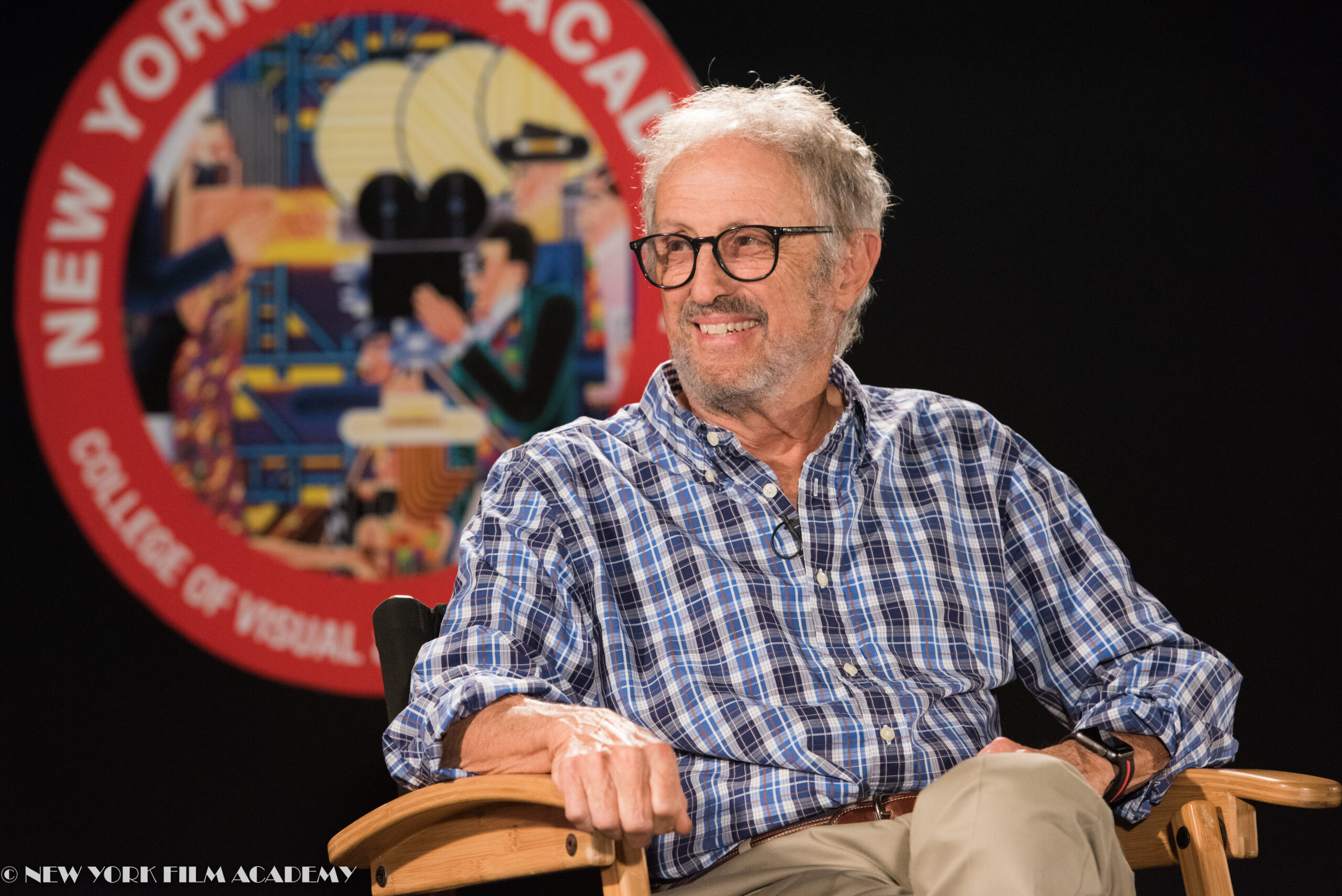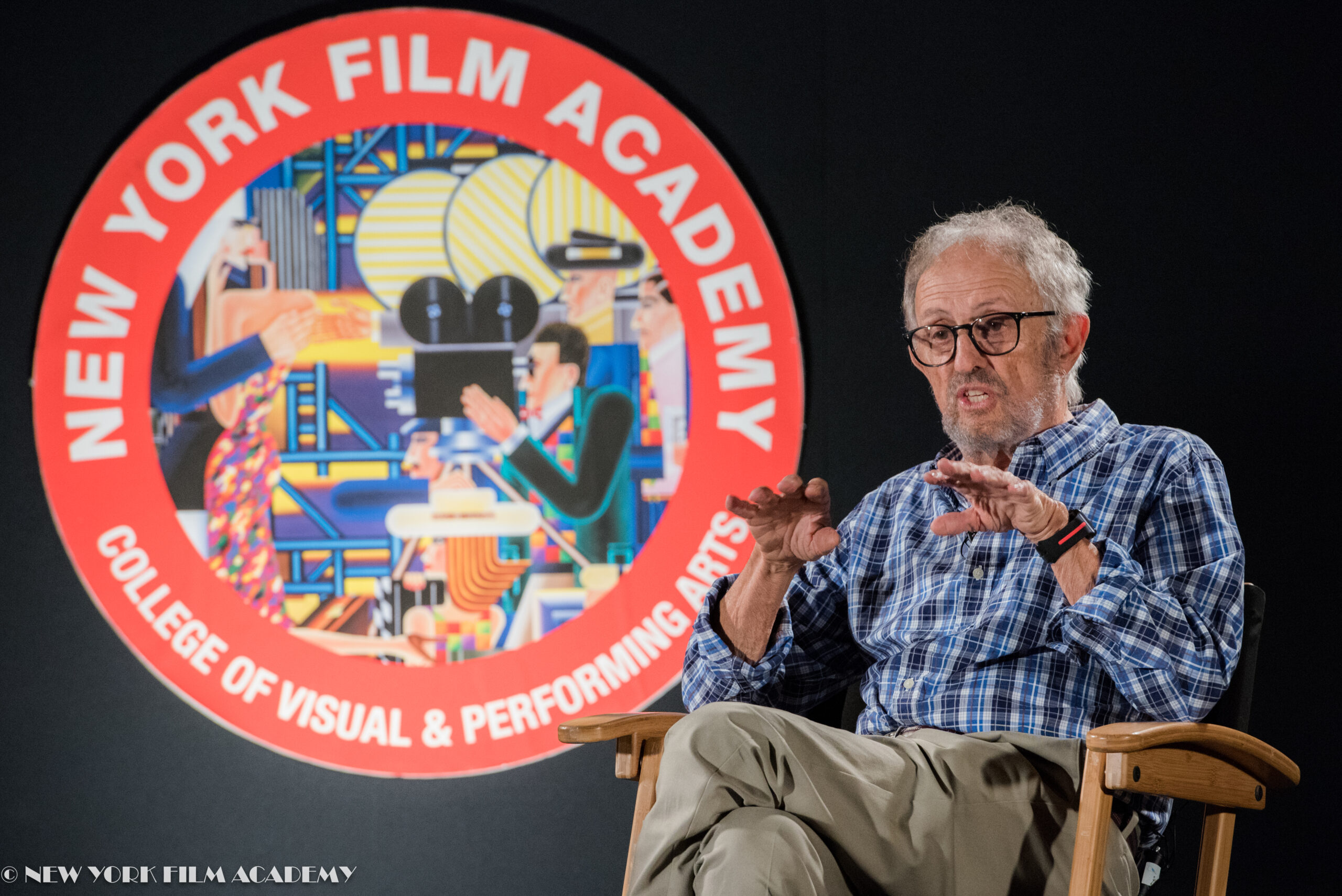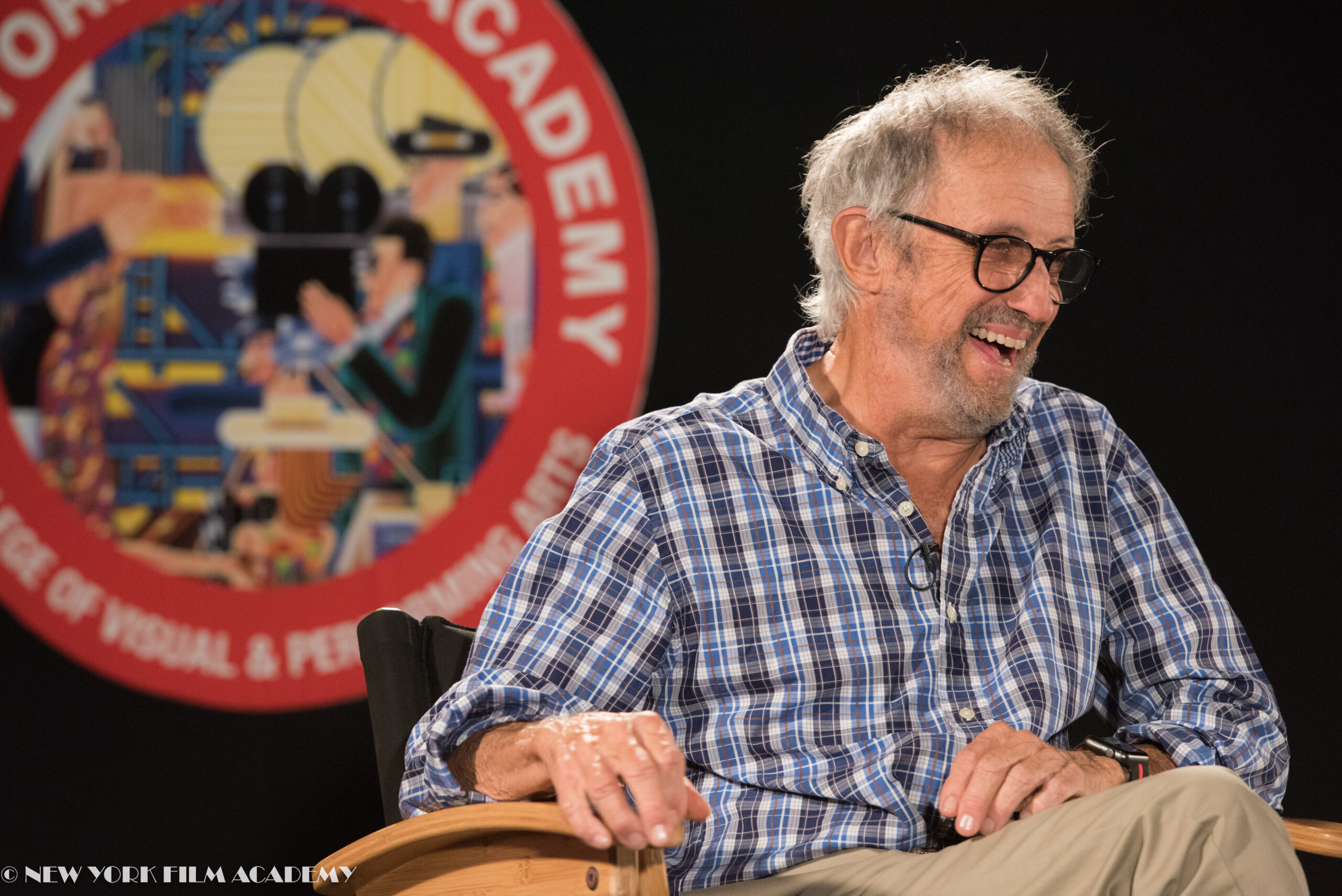On Monday, October 9th, 2017 the New York Film Academy was proud to welcome TV Executive, Jerry London. London is best known for producing “Hogan’s Heroes” and “The Doris Day Show.” He’s directed over three hundred episodes of television, eleven miniseries, and forty TV movies throughout his lengthy career. In addition to working on “Chiefs” with Charlton Hesston and “Ellis Island” with Richard Burton, London earned an Emmy nomination for his work on the twelve-hour mini-series, “Shogun.”
London screened a behind-the-scenes look at the making of “Shogun” for students at our Los Angeles campus. The Q and A was hosted by Associate Chair of Filmmaking, David Newman. The evening’s conversation began with Mr. London’s childhood. On Saturdays, when London was five, he would accompany his uncle to work at the RKO studio lot. “I became fascinated by it. I didn’t know what I wanted to do, but I always knew I wanted to be in the movie business.”
At first, London tried his hand at art design but found admission to the union difficult to obtain. “You had to be a son or daughter of someone who was already an art designer,” he explained. His uncle thought he ought to try editing. On the RKO lot, London learned to splice film on the Moviola. At nineteen, he landed his first Hollywood gig as an Apprentice Editor on “I Love Lucy.”
After eight years on “I Love Lucy,” London moved to Fox to edit the television program, “Daniel Boon.” The producer of the show, Ed Feldman, then asked London to cut a new pilot. The pilot was “Hogan’s Heroes.” The show ran for six years and London edited every episode.
Feldman altered the course of London’s life once again when he suggested that Jerry become a director. London was not convinced he could direct actors. “I didn’t know much about staging. I knew cameras because I used to shoot stills. I knew editing. What I didn’t know was actors or stage direction. I didn’t have the confidence.” He thought about it and began taking acting lessons. Soon he was directing plays and getting to know the ins and outs of the craft.
After a year, he was still struggling with his confidence when it came to actors. He decided to take psychology courses at a local college. “That was the most valuable thing I ever did in regards to becoming a director. The whole course was about dealing with people, how to understand their thinking, and how to make them have confidence in your speaking.” Now, he was ready to direct. In season four of “Hogan’s Heroes,” London directed his first episode of television.
From there he directed “The Partridge Family,” “The Mary Tyler Moore Show,” “The Bob Newhart Show,” and “The Brady Bunch.” These multi-camera comedies were a lot of fun to film, but London aspired to challenge himself with more serious work. “Comedy is a writer’s medium,” London said, “and drama is where the director can move the camera and really set the tone for the piece.”
He decided to take one of the comedy scripts he was hired to direct and shoot it like a drama. He convinced the Director of Photography to take a chance with the network. “At this point, I’d shot 40 episodes (of “Love: American Style”). If I don’t make another one it will be okay.” Six weeks later ABC sent him a letter. He was concerned they hated it and he would be out of a job. Instead, he was hired to direct his first drama.
Now, he was bouncing around back and forth between noted dramas like “Kojak,” “The Rockford Files,” and “The Six Million Dollar Man.” “It was a great education. In those days you shot in six days. As a director, you’re a problem solver and you have to come up with an answer. By the end of those two years, I had a lot of confidence.”
When it was time for questions one student asked, “On a scale of one to one hundred, how much of an actor’s performance is his, and how much is the director.”
“I would say eighty percent of it is his.” London responded.
He said that it is important to give an artist space to create. When he worked with Faye Dunaway on his film, “Ellis Island,” she took out a mirror while rehearsing marks to check up on the work of the Director of Photography. This way she could examine how she looked on camera. The Director of Photography, Jack Hildyard, who also worked on “Bridge Over the River Kwai,” was furious. No one wants to be second-guessed by someone outside of his or her expertise on set.
London did not want to upset or embarrass Dunaway. For the first day, he decided to let it go. As he was watching the dailies he was stunned to discover that Dunaway looked twenty instead of forty. Hildyard was incredible at his job. The following day when Dunaway asked about the dailies London let her know how good she looked and politely told the Academy Award winner she did not need the mirror. Dunaway agreed and they got along famously for the rest of the shoot. “It was the smartest decision I had ever made.”
The New York Film Academy would like to thank Mr. London for taking the time to speak with our students. His book, “From ‘I Love Lucy’ to ‘Shogun’ and Beyond: Tales From the Other Side of the Camera”, is now available on Amazon.


